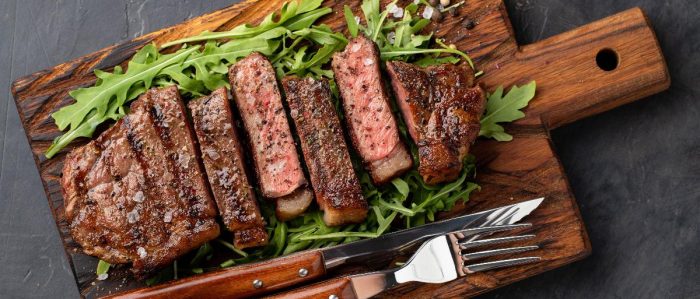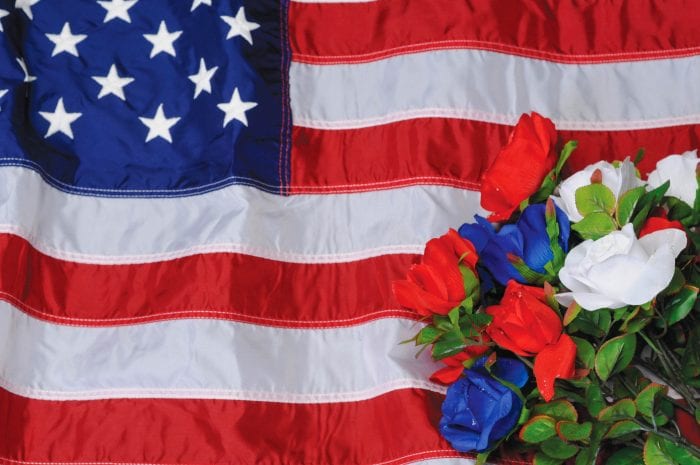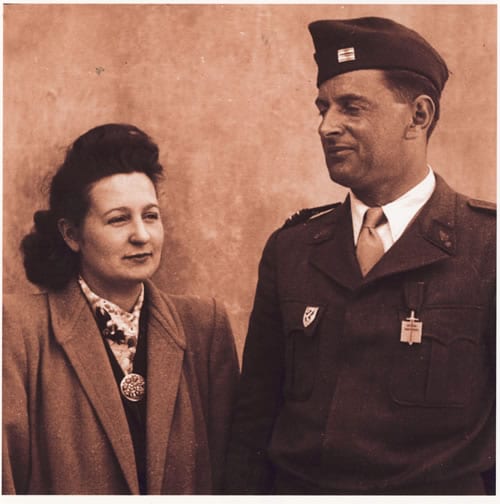By Barbara Beltrami
Most likely, it’s not going to be a traditional Memorial Day barbecue this year. No backyard crowded with family and friends and neighbors bearing salad bowls and foil covered platters. No cooler filled with beer and soda on the deck. No trays of hot dogs and hamburgers. Just you and your family or maybe even just you. So … since it’s going to be a different kind of day anyway, why not dispense with the usual menu and go for something different but very easy? How about steak with butter and garlic sauce? Chicken under a brick? A watermelon, feta, arugula and tomato salad? Grilled potatoes and Vidalia onions? And to remember the red, white and blue, how about a strawberry, blueberry and vanilla ice cream tart for dessert?
Watermelon, Avocado, Feta, Arugula and Tomato Salad
YIELD: Makes 4 servings.
INGREDIENTS:
1 ripe avocado, peeled and cubed
Freshly squeezed juice of one lemon
4 cups diced watermelon
4 ounces diced feta cheese
4 cups arugula, washed, dried and coarsely chopped
2 large tomatoes, diced
1/3 cup extra virgin olive oil
2 tablespoons white wine vinegar
Salt and freshly ground pepper to taste
DIRECTIONS:
In a small bowl, toss avocado with lemon juice; set aside. In a large salad bowl, toss together the watermelon, feta, arugula and tomato. Just before serving, add the avocado, oil, vinegar, salt and pepper to the watermelon mixture. Toss to thoroughly coat with oil and vinegar. Serve with steak, chicken or any grilled meat or poultry and grilled potatoes and onions.
Steak with Garlic Butter Sauce
YIELD: Makes 4 servings.
INGREDIENTS:
One 2-3 pound boneless steak
Coarse salt and black pepper, to taste
4 ounces unsalted butter, softened
2 ounces unsalted butter melted
4 cloves garlic, chopped
DIRECTIONS:
Preheat grill to hot. Rub steak generously with salt and pepper. Smear one side with two ounces of the softened. Grill, buttered side down, until browned on that side, about 5 to 7 minutes; turn and smear top with remaining softened butter; sprinkle with half the garlic and grill until meat reaches desired doneness. For medium rare, a thermometer should read 135 F, for medium, 140 F, for medium well, 145 F (4 to 7 minutes per side). Reheat melted butter with remaining two minced cloves garlic. Slice steak and drizzle with melted butter mixture. Serve hot with salad and grilled potatoes and onions.
Chicken Under a Brick
YIELD: Makes 2 to 4 servings
INGREDIENTS:
1 small chicken, split down the breastbone and pounded flat
Freshly squeezed juice of one lemon
1 garlic clove, minced
1 to 2 tablespoons fresh rosemary leaves
4 tablespoons olive oil
Coarse salt and ground pepper to taste
1 ordinary brick wrapped in foil
DIRECTIONS:
Preheat grill to medium-low. Rub all ingredients well into chicken’s skin. Place chicken on grill, weight down with brick and cook until crisp and golden, about 20 minutes each side, or until juices run clear. Serve with grilled potatoes and Vidalia onions and salad
Grilled Baby Potatoes and Vidalia Onions
YIELD: Makes 4 servings.
INGREDIENTS:
2 – 3 pounds baby potatoes, scrubbed
2 Vidalia onions, peeled and sliced thin
1/2 cup olive oil
Coarse salt and freshly ground pepper to taste
1/2 cup finely chopped fresh flat leaf parsley
DIRECTIONS:
Prick potato skins with a fork. In a large saucepan, parboil the potatoes in salted water until they’re still slightly hard in the center; drain. In a large bowl combine them with the onions, olive oil, salt and pepper. Let sit for 30 minutes until they have absorbed all the oil. Meanwhile, preheat grill to medium-high. Transfer potatoes and onions to grill basket and grill until potatoes are cooked through and onions start to brown. Sprinkle with parsley and serve hot or warm with steak, chicken or any grilled meat or poultry and salad.
Red, White and Blue Tart
YIELD: Makes 6 to 8 servings
INGREDIENTS:
1 pie crust, pre-baked
1 quart vanilla ice cream, softened
1/2 pint strawberries, washed, hulled and sliced
1/2 pint blueberries, washed and drained
1/2 pint raspberries, washed and drained
3/4 cup granulated sugar
1/3 cup confectioners’ sugar
DIRECTIONS:
Spread ice cream evenly in pie crust. Cover and freeze. Twenty minutes before serving, remove from freezer. In a medium bowl, toss berries with granulated sugar, then sprinkle or arrange them over ice cream; dust with confectioners’ sugar. Serve immediately with iced coffee, iced tea or lemonade.





















